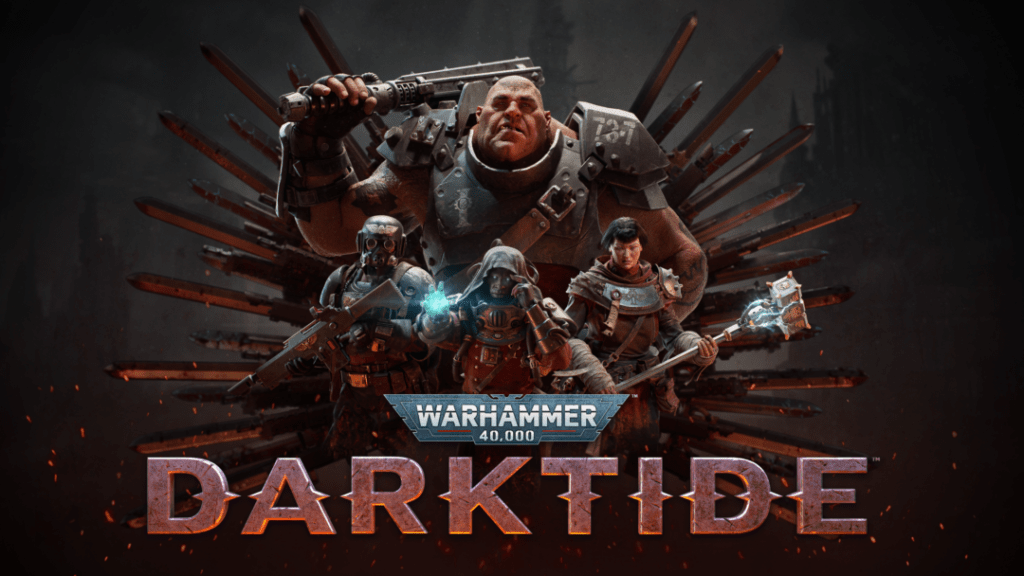
For Warhammer 40K fans, a new 40K game is no surprise. Games Workshop has merchandised the living heck out of Warhammer, both the fantasy version and the science fiction-based Warhammer 40,000 for decades and with good reason. Warhammer is awesome. Let’s say it again for those in the back, Warhammer is awesome! Not only is there a broad universe full of backstories, side stories, and content of all sorts, but it’s well-written, fascinating stuff! The games in the Warhammer universe are just as varied too, with a wide variety of genres from strategy to third person action and even FPS titles.
It’s that last one that we’re going to focus on today. Warhammer was very successful with both Warhammer: Verminide and Warhammer: Vermintide II and with team-based shooters so popular, it was only a matter of time before Games Workshop took the plunge to bring the dark, gritty universe of 40K to the team FPS genre. Warhammer 40,000: Darktide takes all the lessons that developer Fatshark learned in Vermintide II and refines them, creating a more streamlined science fiction experience that’s noticeably similar to the overall feel of the Vermintide series.
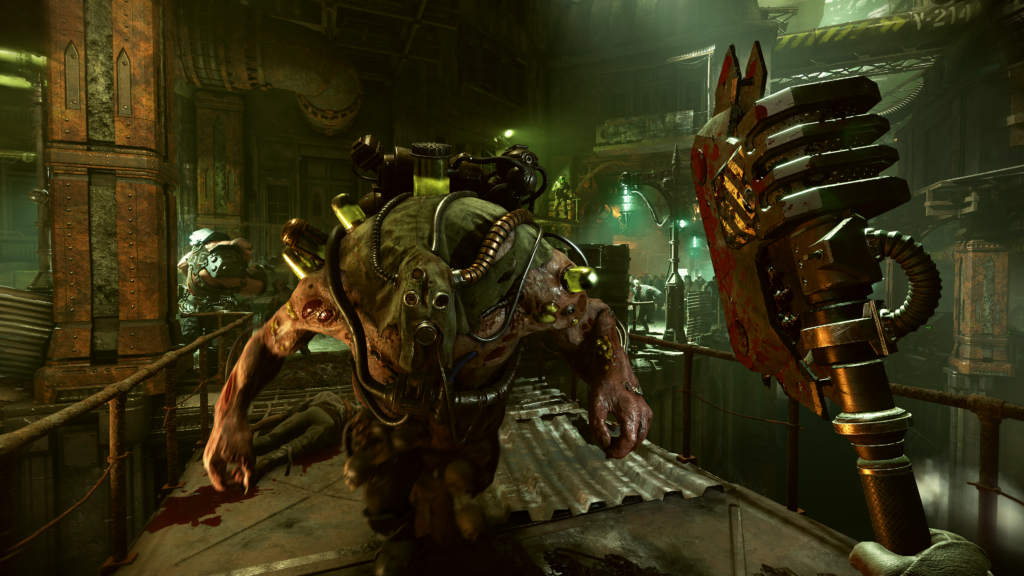
The Tertium Hive City is a mess. Constant war has brought a Chaos infection to the planet of Atoma Prime and the Inquisition is investigating in order to save the city and destroy any Chaos agents. Chaos is a group of parasitic pan-dimensional entities set on destroying reality. Very Lovecraftian stuff. Not good. In Darktide, you’ll choose one of four available characters to start the game, each with different introductions and you’ll end up helping the Inquisition fight Chaos. You can play a Sharpshooter, a giant Ogryn, a Preacher, or a Psykinetic. There are multiple options for each character’s back story which have subtle impacts on your character depending on your choices.
Once you’ve chosen a character, you’re introduced to a hub on the Mourningstar, a giant battleship. From there you will launch sorties with other players and complete missions in order to gain trust with the Inquisition, build levels, upgrade your characters, and advance the overall storyline. From the hub, you can access a variety of services (though some are locked until you reach certain levels) and select your missions in the core. While other players are visible in the Mourningstar, you can’t really interact with them and don’t really need to. You instead visit the various shops and services, then either join a group of your choosing on a mission or use the game’s matchmaking service to team up with a bunch of random people to play. If someone ends up dropping out during matchmaking, you may end up with a bot instead, but that doesn’t happen too often.
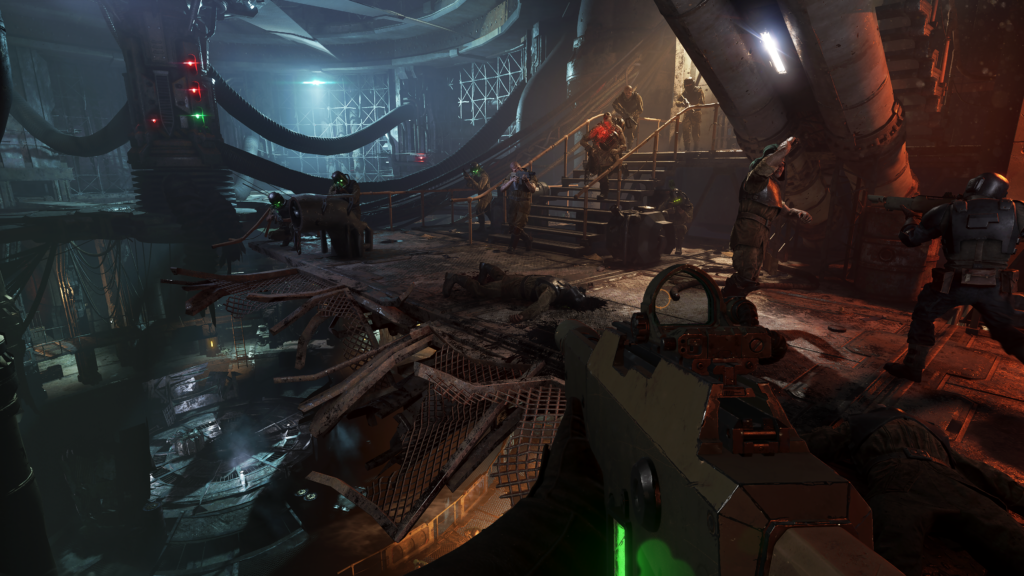
The heart of the game is completing missions. Each mission (assuming you don’t die) gains you money, trust, and even weapons. There are secondary objectives including gathering supplies and various relics as well, but you don’t have to complete them to advance. Complete a mission and you get a fair chunk of experience based on the level of the mission and how you did. Die, and you get a pittance, nothing more. The goal here is teamwork and much like Vermintide II, you’re swarmed by infected enemies sent by agents of Chaos. The difference here is in the level design and quality of life upgrades.
While Vermintide is great, there were some definite issues with the game, one of which was the sheer size and scope of the levels themselves. Vermintide 2 was simply begging to be explored like a leisurely FPS and it was nearly impossible to do so without being cut off from your teammates. Darktide changes that, re-engineering the levels to be more contained, the hidden items to only be slightly off path, and the level design to allow for better utilization of terrain. Many of the things that casual players and even some hardcore fans found frustrating about the last game has been tweaked here. There are plenty of choke points and bottlenecks to utilize for one. Healing your teammates seems easier and the weapon variety and power is superior as well. You can still get behind if you’re dilly-dallying wandering through rooms but honestly, most of the time they’re there for effect and the real fun in the game is pushing forward fast and furious as waves of enemies hurl themselves into your line of fire!
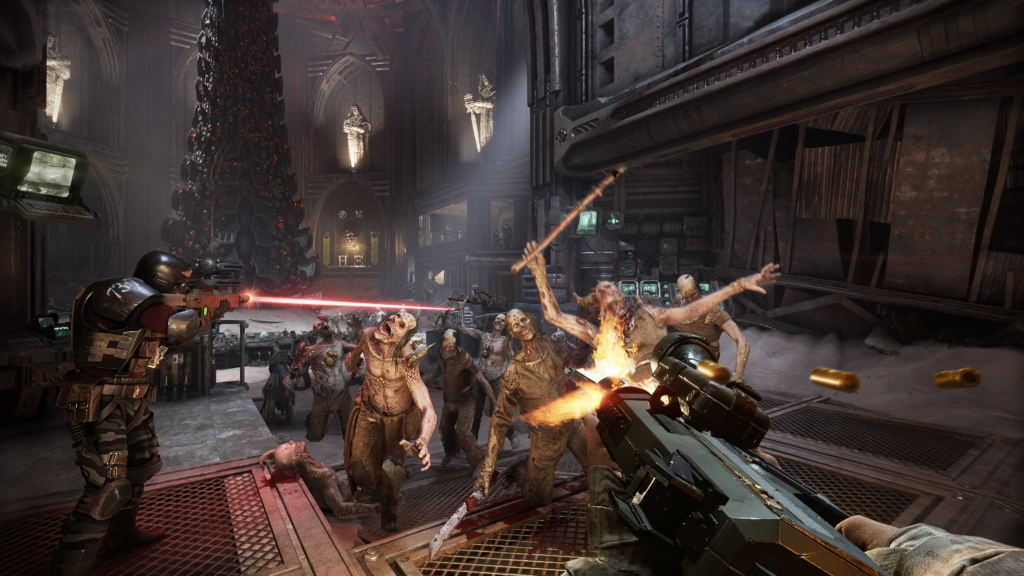
Naturally each class has its strengths and weaknesses. The Sharpshooter for example is decent at hand-to-hand combat but excellent with ranged weapons. Unfortunately, early on those weapons have a low fire rate and limited stopping power so you’ll likely burn through ammo. The Ogryn is big, strong and perfect for wading right into the heart of the battle but if you like to sit back and shoot, this is not the character for you. He’s more of a giant walking tank than anything else and that’s definitely fun though. Psykinetics are powerful against elites and can literally blow the heads off of enemies, but they’re predictably not much for melee combat. Finally, the Preacher is a decent mix of ranged combat and melee skill but leans a little harder on the melee side of things. Regardless of which class you prefer, they’re all quite playable, though the Psykinetic is definitely the most challenging to get the hang of (especially since they just got nerfed).
Warhammer 40,000: Darktide depends primarily on mission gameplay to carry the majority of the game and that gameplay is remarkably entertaining. Levels are well-balanced and thought out, with natural-feeling pauses between hordes of enemies and massive bosses which give you just enough time to regroup, reload and heal before the team is back into the thick of it, guns blazing and axes swinging. Each level is approximately 20 minutes long, the perfect length for an intense combat scenario before you need a bit of a break. The great thing about this design is that it’s set up for both casual and serious players alike. Casuals can jump in, play for a bit, then go do something else. Hardcore gamers are able to zip from mission to mission 2-3 times per hour with ease, changing up the backdrops, mission parameters, and team structure repeatedly. This keeps the gameplay a little fresher for everyone. With shorter missions than Vermintide II, a lot more people have the opportunity to spend a fair amount of time in the Warhammer universe.
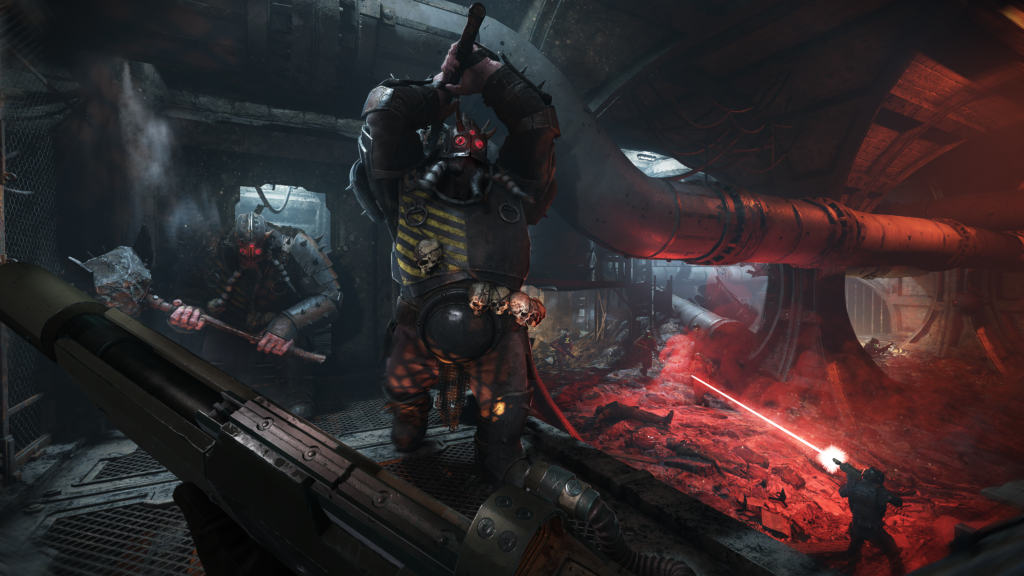
Visually, Darktide is utterly teeming with style. The dark, almost apocalyptic vision for the future that Warhammer 40,000 portrays is elegantly displayed in the complex industrial designs prominently featured both on the Mourningstar and within mission levels. Detail levels are high even if you don’t have a top-of-the-line graphics card and the game looks fantastic most all the time. The low-light levels common to most of the gameplay are balanced well so that you’re not straining to see into dark corners or across rooms too much while maintaining the oppressive atmosphere of the Chaos-polluted areas of the Tertium hive.
Character designs are equally impressive with a vast array of optional clothing and armor skins available, some with premium price tags attached. Naturally with the game updates provided free, Fatshark has chosen to have skins available for purchase in standing with current trends in gaming. There are plenty of things you can scrounge up to wear anyway however, and you certainly shouldn’t be expected to have to buy them, but there are also some cool outfits! However, be aware that the visuals are a bit iffy and finicky in the hub and there are weird graphics glitches and dropouts on characters there.
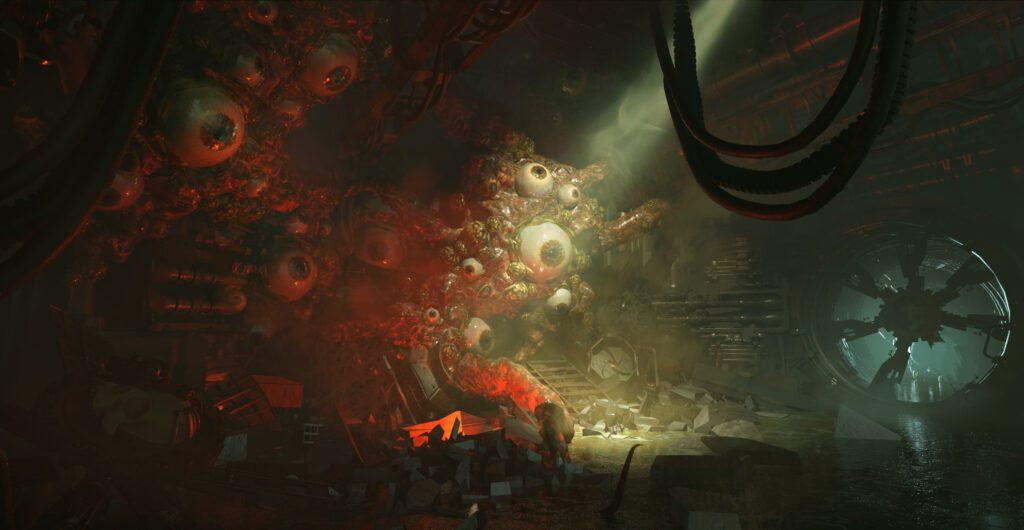
The sound in Darktide is excellent as well, making players feel like they’re actually on spaceships and in abandoned (or not so abandoned) factories and other areas. The groans and creaks of metal, the dripping of water, and the meaty thumps of your axe all have significant depth to them and the overall impact is one of surprising realism. The soundtrack cranks things up hard as well, and as the music kicks in while a horde swarms you, your pulse rate amps up and you’ll be firing away to the soundtrack in a gleeful killing spree. Oh yeah, and the voicework is excellent as well with a ton of spoken dialogue that constantly surprises in its variety.
There are a few downsides to Warhammer 40,000 Darktide however. One of the biggest is the load times. Initial load time on the game are a solid 5+ minutes on a traditional HDD and in-game mission load times can be up to a minute plus. There’s also a fair amount of loading between the initial menu load and accessing the Mourningstar once your game loads. It’s a lot of waiting for a game that’s dependent on pacing. If you happen to have an SDD or better yet an M.2 drive, it’s definitely worth your time to install to one of them instead as you’ll definitely save about 75% or more of that load time. Standard drives don’t cut it on modern games anymore and the game is noticeably designed for the faster load times of high-speed drives but it still has a bit more loading than it should. There’s also a moderate crash rate which seems to be intermittent but is slowly stabilizing and not unexpected with online games and the requisite online nerfing, again to be expected.
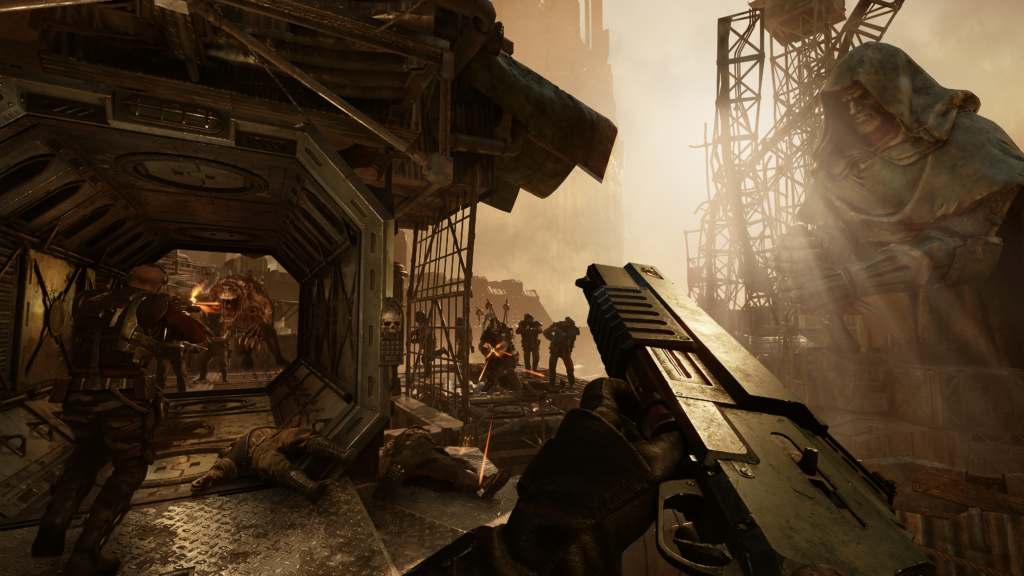
In addition to load times, there are some other niggly problems that make Darktide a bit less than it has the potential to be. One of those is the gameplay loop itself. While it’s fantastic to chunk the game into 20 minute segments and some hub time, the loop starts to feel stale fairly quickly. It’s obvious that the devs thought of that because at level 5 you start getting talents and earning toughness for kills and other things and as you unlock trust levels starting at about level 8 the weapons available to you improve noticeably. The early game weapons are quite weak and are basically the armaments versions of training wheels while you get a feel for the game. Once you start really getting your groove on, the weapons definitely are more fun, but the grind to constantly incrementally improve your weapons is real and it’s definitely not as fun as say, the Borderlands series.
Finally, there’s the Mourningstar itself. It’s wonderful to have a fully realized vision of part of an Inquisition battleship but at the same time, the hub is too big and spread out and there’s really no need for it. Sure, it looks cool and makes the ship feel a bit more realistic, but you spend a fair amount of time running around in third person (ostensibly so you can admire your armor) with some particularly rough character animation compared to the rest of Darktide. After you’ve spent some time on the hub, the wheel starts to feel much smaller than it should too, and this is a really ridiculously big ship, so why not limit the walk time in order to streamline the focus on missions more? Ambience, sure, but there’s a balance trade-off.
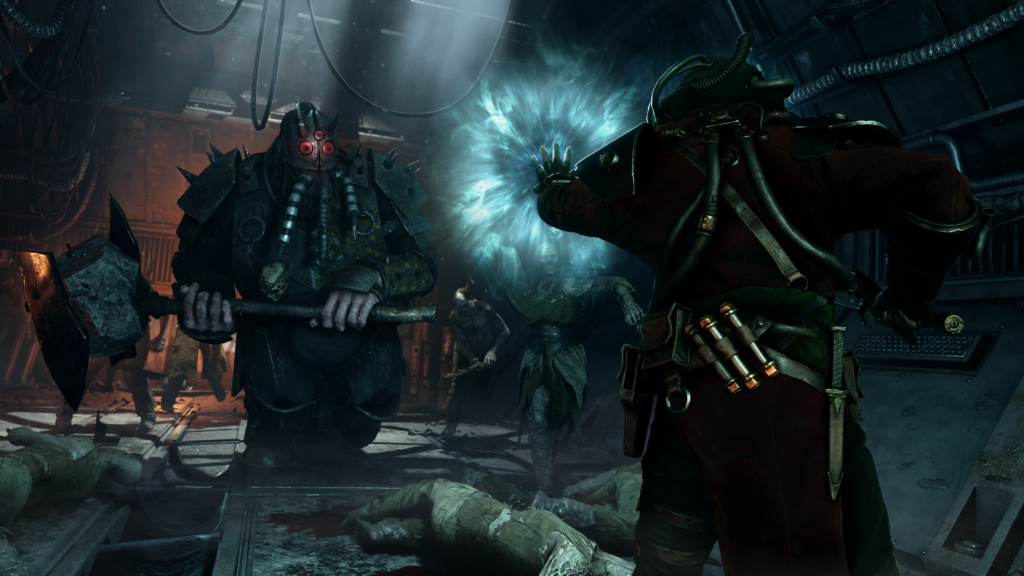
While this review details an overall positive experience, not everyone feels the same way, as demonstrated by the fluctuating user ratings on Steam currently. Many of the quality-of-life components that are anticipated in Darktide simply aren’t there yet. For example, weapon crafting has yet to be implemented, leaving some players running the game in separate windows waiting for weapon refreshes to grab the key weapons they need which are otherwise unattainable. Perks can now be re-rolled in the game, but blessings are not able to be, something that should likely be implemented soon. Servers are a bit flaky too, as mentioned earlier, but this is a new game and it’s just come out of beta.
But what bugs players most is the fact that Darktide doesn’t really seem to care about time management. Weapons are locked behind level gates, requiring added time and grinding, there’s no communal cash pool for your characters, and no crossover gear, meaning you have to start from scratch with each character. That’s definitely frustrating when you’ve sunk a ton of hours in and a number of players are certainly expressing their displeasure currently. But it’s also worth keeping in mind that Vermintide II was amazing when the bugs and kinks all got worked out and that was a good year into it’s lifecycle. We’re only a couple of weeks post-launch here.
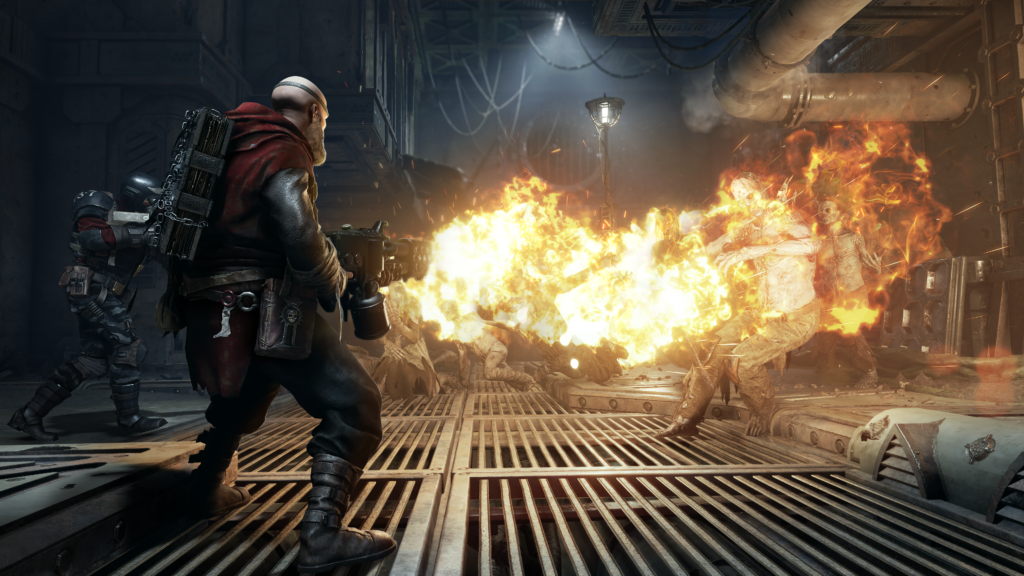
Overall, Warhammer 40,000: Darktide is a fantastic game with a noticeably polished feel to the gameplay, incredible atmosphere, and an absolute ton of dialogue with uncounted nods to Warhammer lore. There’s a lot to love here and even within character types there is enough variation to keep most players happy. Plenty of love has been put into this one and Fatshark has outdone themselves. There are some hiccups of course and it would be better to have more mission styles and backdrops but that’s a heck of a lot of content to maintain and it’s likely that there will be several expansions for the game in the future. In addition to the regular version of the game, there’s also an Imperial version that gives you access to exclusive character and weapon skins, some premium currency to pick your own extras, and the digital soundtrack, which is definitely worth an independent listen. All in all regardless of whether you get the regular game or the swanky Imperial Edition, it’s worth picking up Warhammer 40,000: Darktide and obliterating Chaos in the name of the Imperium!
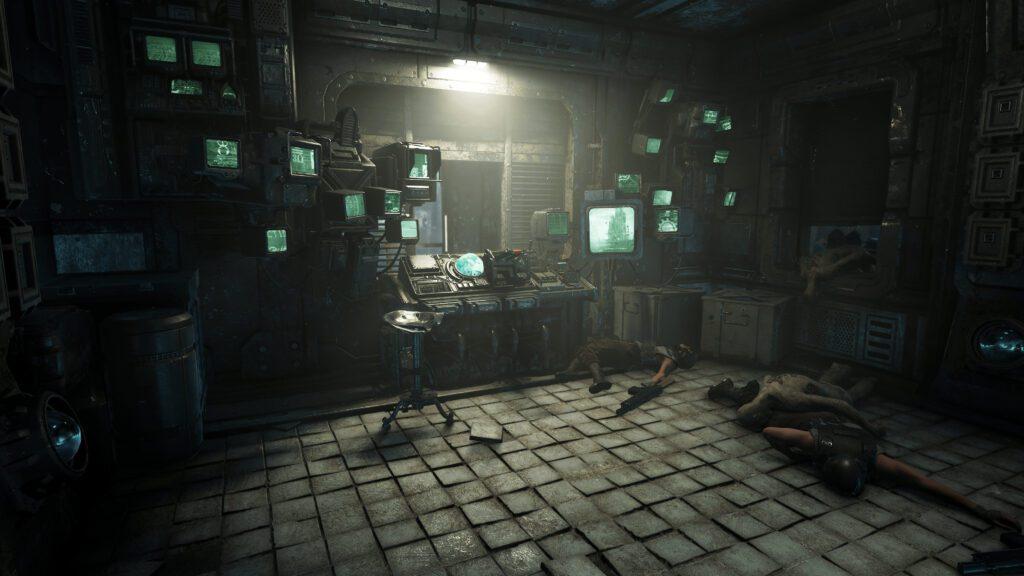
This review was based on a digital copy of Warhammer 40,000: Darktide Imperial Edition provided by the publisher. It was played on a Windows 11 PC using an I7-8700K with 16 GB of DDR4-3000 RAM, and an Asus GeForce GTX 1080 ROG Strix graphics card and an M.2 drive. Warhammer 40,000: Darktide is also forthcoming on console on the Xbox Series X.

